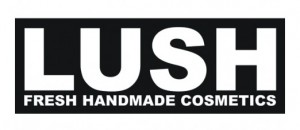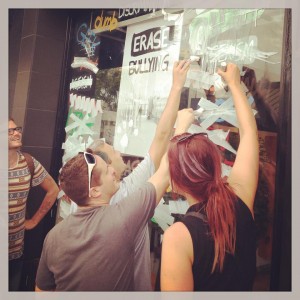A few weeks ago, my roommate and I decided to have a beach day so we headed down to Santa Monica. On the way back to the parking garage, she decided to make a quick stop at Lush Fresh Handmade Cosmetics so she could purchase a $6.95 Fresh Face Mask. Since I had never heard of the company before I decided to join. I clearly had not anticipated buying anything, but long story short and an hour later, I was the one who ended up walking out spending $60+. Had the fact that my roommate and I gotten free facials at the store have anything to do with the recent damage done to my credit card? Possibly. Although that does not explain why my roommate walked out only buying what she came in for and I, on the other hand, walked out almost buying the entire facial cleansing section of the store.
We are continuously told the importance of great customer service, and I believe a customer’s retail experience is the future. In fact, a recent Salesforce blog post by Kendall Thornton, states research from McKinsey & Company found “70 percent of buying experiences are based on how the customer feels they are being treated.” As marketers, we know when a customer walks into a store for the first time, the way they are treated sets up all future encounters. We want these customers to feel good enough to engage with the company and ultimately become brand loyal. Simply put, a buying experience can lead to a brand experience. The experience is just a matter of how we steer customers into that direction.
Before I go any further, I should explain our experience at Lush. The vast difference between our experiences at the store is what led me to believe why I had recently turned into a talking billboard for the company. As soon as we arrived, we began looking at the facial masks. Within a few minutes, a salesperson asked if we would like to get free facials. As the salesperson massaged each cleanser and mask on my face, she took the time to explain what each item was and what it did. This does not sound quite special, but the next thing she did actually took me by surprise. She asked me personal questions – each time addressing me as Miss Allison – to understand me and my lifestyle. Upon learning that I was a second year graduate student who was about to embark on a whirlwind of a journey called a thesis, she began to recommend products with scents of lavender to calm my anxiety. Never before has a salesperson 1) cared enough to get to know me personally and 2) help me find ways to cope with my anxiety through everyday products. As for my roommate, all the above had been absent from her experience. In fact, every time a product was placed on her face, she had to ask her salesperson what the item was and what it did.
It is very apparent my roommate and I had completely different in-store experiences; I felt as I had been treated like a princess, while my roommate felt conversely. My buying experience was simply unparalleled to any shopping experience, and thus, creating a wonderful new relationship. However, my buying experience did not stop there. As I was checking out, the cashier told me to like the Facebook page of their store in Santa Monica. She said the employees from the store check it regularly and answer fan questions posted to the page. When she handed me my bag of goodies, she slipped in a free sample of their Ice Blue soap bar and a copy of their Lust Times magazine which highlights all the charities they have helped through the years. As I walked out of the store, I noticed the window display in which people were encouraged to write on the window to erase bullying.
It became very clear to me that the company stands with its values and honestly respects every customer and goes beyond to help not only the local community, but also the world. Lush has built their company on a truly compassionate brand – something that has been clearly conveyed throughout the company, even in the buying experience.
We live in a society where people want to feel respected and now it seems people are becoming intolerant to brands that do not treat them with respect. With popular social networking websites (i.e. Facebook, Twitter, Yelp, Redit, etc.) it makes it impossible for companies to avoid negative reviews or comments, which can go viral and become damaging to the brand’s image. By placing more time and effort into matching the buying experience with the brand identity and experience, it can help eliminate people from feeling negatively towards a brand. Show customers what the brand stands for through the brand experience. Connect with the customers outside of the buying situation and show them the brand is more than just making sales. The trick is to create a cohesive identity and experience. The brand should encompass the same feeling when people visit a store, use the products, and interact with the brand. If the characteristic the brand has founded their identity and experience on is missing from one aspect, it could mean the very difference between someone such as me and someone such as my roommate.
Source: http://blogs.salesforce.com/company/2013/08/customer-service-stats.html




5 Responses to How the Buying Experience Relates to the Brand Experience